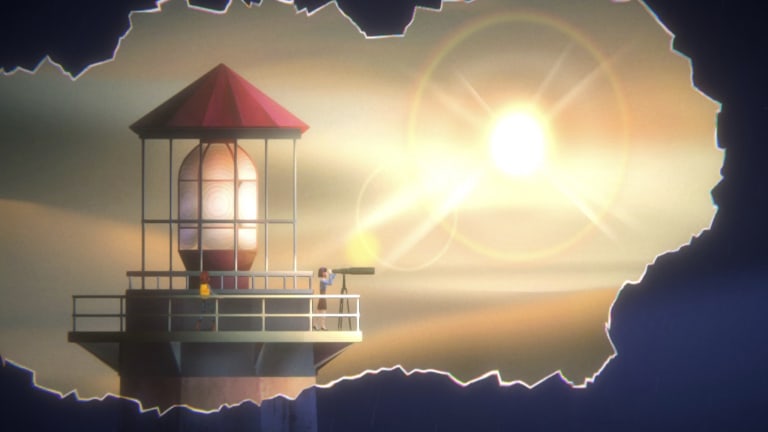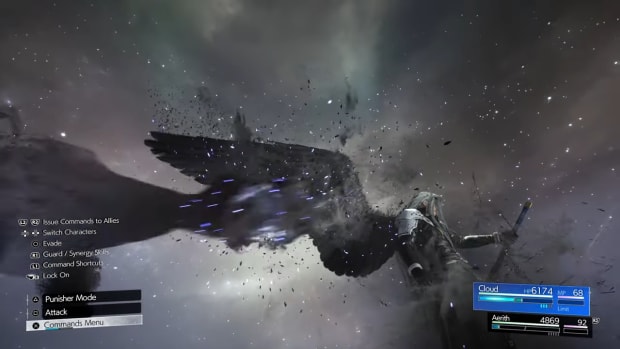
Oxenfree 2 Lost Signals review: A clever, intimate adventure

If I woke up at a creepy bus stop with a strange woman asking me to put radio signal devices in strategic locations, I’d probably refuse and run away, looking over my shoulder as I left. Riley, the protagonist of Oxenfree 2: Lost Signals, is clearly made of sterner stuff. With characteristic nonchalance and a touch of cynicism, she agrees and sets off up the mountain on an adventure that she never signed up for. The structure of that adventure is familiar. However, despite sharing much in common with the first Oxenfree, Lost Signals tells a stronger, more intimate story that improves on everything that made the original game special.
Oxenfree 2 isn’t your usual horror game. It’s not as explicitly terrifying as some visual novels, and any tragedies that unfold are the direct result of your choices – not your poor aim or lack of equipment. It plays like a classic ghost story, the kind you’d expect from M.R. James or Susan Hill.
It’s persistently eerily, with a lurking sense of danger that follows Riley around, sometimes literally, when the restless dead of Camena Coast get involved. The narrative builds smartly on the first game’s scenario and its implications, feeling more thoughtful and less self-conscious, effortlessly weaving its supernatural and human themes together from the moment the game starts.
Night School bills Oxenfree 2 as a standalone game, but it’s a good idea to play through the first before giving this one a go. A certain important character from the first game plays a role later in the game, and the themes and storyline from the original start showing up within the sequel’s first hour. You can get through without knowing what happened on Edwards Island – but it’ll feel like you’re missing something.
While Lost Signals’ central mystery is gripping, what kept me interested for the dozen hours or so that I played was the character stories. You can tell from the start that Riley’s been through things, even before she brings up her past and family troubles. Sadness and loneliness hide just under the surface of Jacob’s happy-go-lucky exterior, and Evelyn, the woman who sets you the task of placing radio signals in the first place, clearly knows more about the area’s phenomenon than she’s letting on – and probably isn’t as caring and empathetic as she first seems.
Their stories and others take surprising directions as they gradually converge, and how they converge will change depending on your choices.
The benefit of weaving time travel and other supernatural antics into Oxenfree 2 from the start is that it alters your perception and how you approach most situations. I quickly abandoned any idea that I knew what was going on and didn’t regain that confidence until much later in the game. I remained halfway convinced that the current cycle was just another dream of Riley’s and speculated whether one of her companions might be influenced by a ghost, even without the telltale red speech bubble that usually indicates paranormal involvement.
The areas around Camena Coast add to that feeling of playing a dream. There’s a blurred fuzziness around the edges of your view that adds a fitting sense of illusion everywhere Riley goes.
Oxenfree 2’s approach to sound design supports this feeling in a unique way, and while it didn’t click with me at first, I eventually appreciated what it was designed to do. There aren’t many sounds. You’ll hear footsteps occasionally, the ringing of a phone indoors, or the clunk of a ladder you move – but fire doesn’t crackle, water is silent, and even the air barely breathes. It’s not normal, but then again, Camena Coast and Edwards Island certainly aren’t normal either.
The downside to this clever sound design approach is that it makes getting around – already one of Oxenfree 2’s less enjoyable elements – rather dull. Camena Coast isn’t a massive region, but when Riley’s fastest movement is a trudging half-jog, even small maps through the coast’s silent trails and byways feel like they take an age to traverse.
It’s not all tedium, though. Riley’s companions often strike up a new conversation when you’re retreading old paths, and that’s always a highlight.
Oxenfree’s color-coded speech bubble dialogue branches return, as does the more innovative system where you can just stay silent and see how the conversation progresses. How your choices impact the story’s outcome remains as opaque as ever, and that’s a good thing. Oxenfree 2 is at its best when it keeps you off-balance.
The lack of certainty also makes it easier to focus on the moment, the small interactions that create a more complex set of characters and viewpoints. Does it matter that Jacob is an amateur sculptor or how Riley reacts to seeing his work? Maybe not, but how you have Riley react sheds just a bit more light on one of her companions, and gives you a chance to shape her worldview in the process.
It’s a clever system and a subtle nod to the fact that we never know how our words and actions might influence someone else. Making a silly joke or going along with a lighthearted conversation might not seem like much to us or Riley, but it could mean the world to the other person involved.
It helps that Oxenfree 2’s writing is so strong. Like the original, one of the script’s best qualities is how natural it feels and flows. It reads like a believable conversation, something you would expect to hear in real life or even say yourself. The tone occasionally feels forced, like the writers wanted very much to fit a certain style from a 20-something age group, but even that awkwardness tends to serve a purpose – usually masking a character's insecurities or deeper feelings. It sounds like one as well. It sounds like a natural conversation as well, thanks to Oxenfree 2’s exceptional voice acting.
Walking and talking is at Oxenfree 2’s core, just as it was in the first game. There’s a light layer of puzzle solving, which, despite essentially being simplistic, makes you feel clever thanks to the lack of clear signaling about what to do or how to do it. Riley has a radio that functions in a way that’s similar to Alex’s in the first game, and there’s also a walkie-talkie that connects Riley and Jacob with other characters and opens more opportunities for conversation.
Lost Signals is pretty much more Oxenfree, but better. That might seem disappointing from the sequel to something that promised to revolutionize adventure games, but the refined storytelling, intimate character moments, and creative presentation are, in this case at least, just as good as – if not better than – a brand-new idea.
Score: 9/10
- Gameplay: 7/10
- Story: 10/10
- Sound: 9/10
- Visuals: 10/10
Platform tested on: PC
Oxenfree 2 technical breakdown
Oxenfree 2’s PC version takes up few resources and runs smoothly for the most part. I encountered a few crashes and stutters at random moments, though these issues didn’t repeat in the same spot at the same time. Load times on a PC or laptop are almost nonexistent, though while Oxenfree 2 functions well on Steam Deck in general, it takes much longer to load when you boot the game and transition between areas.








